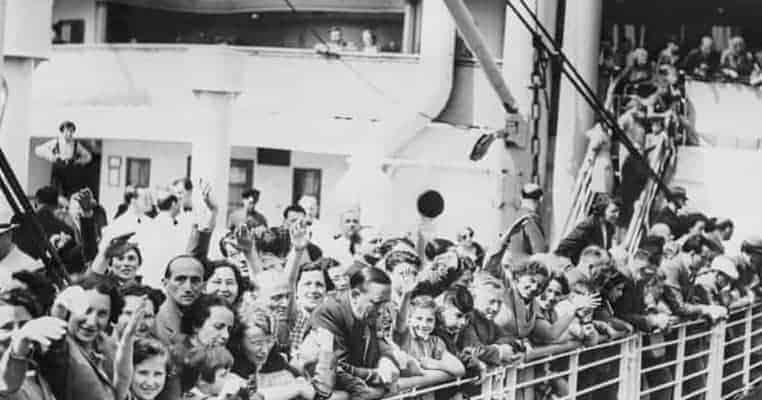The USA has often been celebrated as a refuge for the displaced. The period before and during the Second World War is one particularly noted for this- especially regarding intellectuals of Jewish descent. Scientists such as Albert Einstein, Hans Bethe, and James Franck were all given refugee in America. Also, in 1933, the Emergency Committee in Aid of Displaced Foreign Scholars was established in response to the rise of Jewish persecution under the fledgling Nazi government.
The Rediscovering the Refugee Scholars Project, set up by a team from Northeastern University recently began to analyze the files of over 5000 scholars who applied to the Committee for aid. Astonishingly, they found that only 330 were successful- and of these only 4 were women. While many female scientists managed to reach America without the Committee’s help, many others did not. Was the low number of women helped by the Committee deliberate discrimination? Or are the Northeastern team’s findings a sobering lesson on what can happen to foreigners in general?

The Emergency Committee in Aid of Displaced Foreign Scholars
The Nazi Party came to power in January 1933. By April of that year, “The Law for the Restoration of the Professional Civil Service” had been passed. This legislation blocked Jews or those with Jewish grandparents from working in a variety of state-run institutions in Germany- including universities. This policy led to the sacking of 1/3 of the staff of some faculties- a total of 12,000 people in Germany alone. As the 1930’s progressed and the war began, the policy spread to other countries as the Nazi’s dominated them. Soon, there was no refuge in mainland Europe for Jews of any line of work.
There was, however, hope- for Jewish scholars at least. In 1933, The Emergency Committee in Aid of Displaced Foreign Scholars was established in the US. Funded privately by the Rockefeller and Carnegie foundations, and run by journalist Edward R Murrow, the committee aimed to find placements for European Jewish intellectuals- particularly in science and mathematics- in American universities. Almost immediately, letters began to flood in. From 1933 onwards, the Committee received between 5000-6000 applications, from which they had to sift through and make their selections.

“The general assumption about these scholars is that everyone who wanted to come came,” explained Laurel Leff, Associate Director of the Jewish Studies Program in Northeastern’s College of Social Sciences and Humanities and part of the Rediscovering the refugee’s project team. The truth was very different, for out of the thousands that applied, the Committee only granted aid to 330. For those who were turned down, there were other avenues into America. A written affidavit from friends or relatives already in the US was one way to enter, as was a regular visa. However, neither guaranteed work- or a smooth passage into American society.
Many female scientists had academic records equal to or exceeding their male counterparts. The fact that the Committee only supported four women suggests that for females the odds were even higher than the men. To gain a fuller picture of precisely what these female intellectuals were up against when trying to enter America, it is worth considering the stories of a handful of them: those who made it, those who didn’t and one of the few the Committee in Aid of Displaced Foreign Scholars, actually helped.

